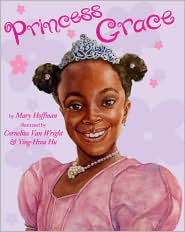
The Year of the Dog
by Grace Lin
Summary: This story is about a young Taiwanese-American girl named Pacy who assimilates into the American culture while still discovering new aspects of her native culture. The story starts off with the celebration of the Chinese New Year and the welcoming of the Year of the Dog. Pacy’s family integrates the American culture into their home life and she is able to explore the best of both worlds. She struggles to make sense of finding herself and dealing with disappointment through various situations at school and with family and friends. She becomes best friends with a new student at her school who happens to be Taiwanese as well. Through her friendship, she experiences different aspects of her native culture. The story is filled with a genuine experience of a young girl who finds out something new about herself and her Taiwanese and American cultures with each passing day.
How I would use this in a classroom: This book is a great way to explore aspects of Taiwanese and Chinese cultures which include holidays, customs and cuisine. Several informative facts are included in the story and can serve as a great supplement to a social studies unit on the study of China. It can also be used for character study because it explores the main character’s growth and experiences. The book can be used as an introduction for a discussion of students’ different cultures. It also includes several personal anecdotes of the different characters in the story and can be used as a part of a writing unit.
Supplemental Links:
http://www.gracelin.com/content.php?page=book_yeardog
http://suzyred.com/2007yearofdog.html
Domains of Social Justice:
1) Self-love and Acceptance: Children learn about their own culture. Pacy explores her cultural background and slowly begins to understand its influence on her life. She is able to connect with others of the same culture, her own passions and talents. She begins to accept herself for who she is and realizes not to be limited or defined only by her culture. Her story encourages and examines self-discovery and emphasizes not being bound by one prevalent characteristic.
2) Respect for Others: Strengthens intercultural competence. Pacy assimilates into the American culture while still learning about her Taiwanese culture. The story emphasizes how stereotypes are not binding.
3) Exploring Issues of Social Justice – Racism, Classism, Sexism, Homophobia and other forms of oppression are confronted. Pacy experiences subtle forms of racism in her school community of being a Taiwanese-American. Her differences are made apparent by the faculty and she realizes how her race might define her competencies. For example, in her school play of The Wizard of Oz, she felt as though she could not play the part of Dorothy because of her appearance. Her story examines being a different nationality in a predominantly Caucasian population in contrast to assimilating into a new culture.
5) Taking Social Action: Students explore their own context and develop tools to work for change. The book and story itself can be used to promote cultural discovery and acceptance. It can aid in helping students realize the part that their own cultures play in their lives and how it is important to be accepting of other cultures as well.























